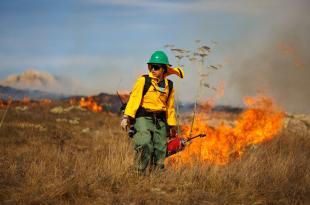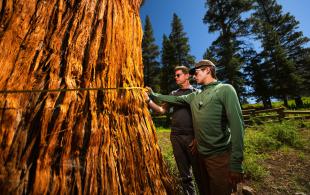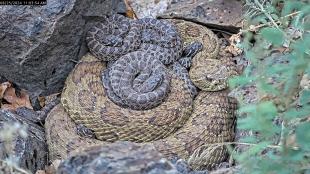Ask an Expert: How Do I Stay Sssafe During Rattlesnake Season?
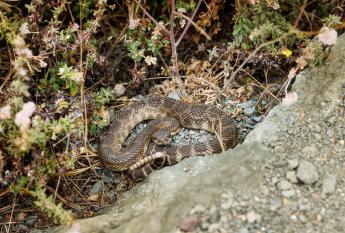
Springtime in California: the weather is warming up, the winter rains have painted the hills with greenery and flowers, and more and more people are taking to hiking trails and soaking up the sun. But we’re not alone: the temperate conditions also mean more rattlesnakes are out and about too.
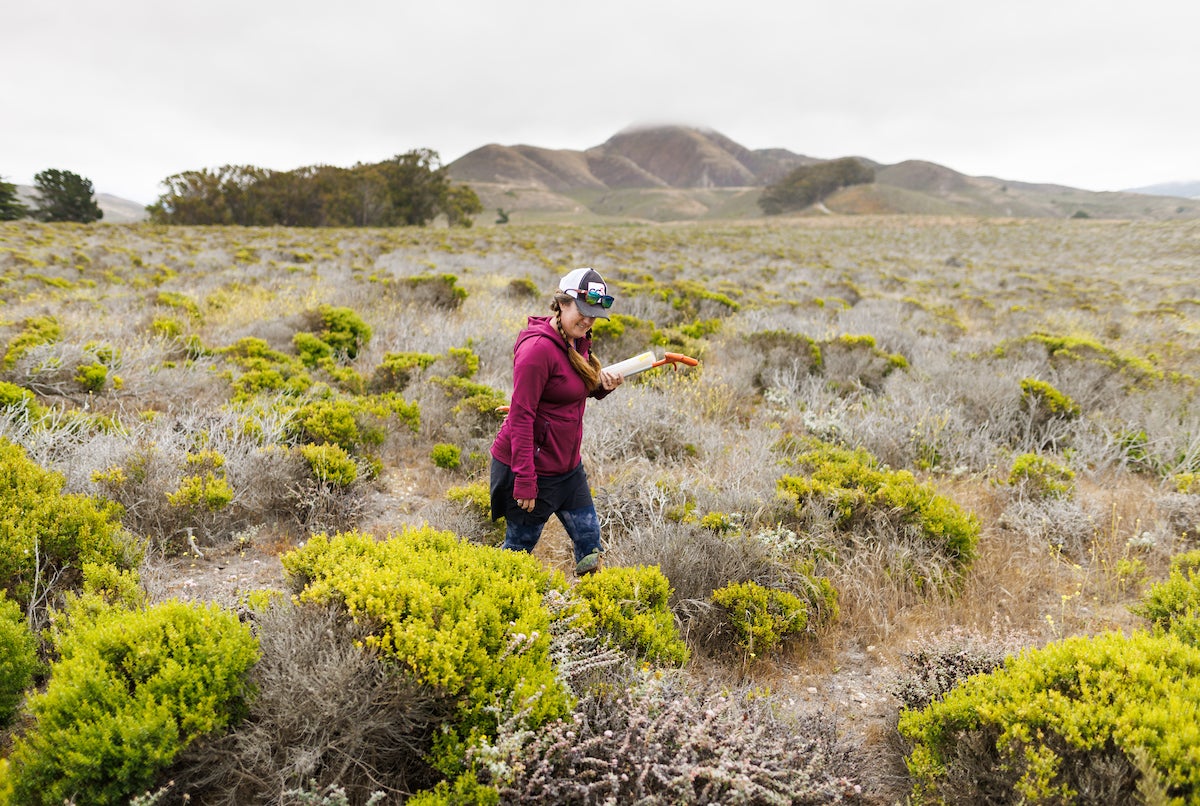
Cal Poly News spoke to biological sciences professor Emily Taylor, who owns a snake consulting business and runs the Physiological Ecology of Reptiles Lab at Cal Poly, to learn more about these creatures, how to peacefully co-exist with them and how to stay safe. This conversation has been edited and condensed for clarity.
When is peak rattlesnake season?
The main rattlesnake season is April through October. That's when they're mating and feeding. From around late October through late March, they’re mostly hiding underground and hibernating — but there are exceptions. You can go to Montaña de Oro State Park on a warm day in January and see one.
A good rule of thumb is that if you’re comfortable, so are they. I always tell people that rattlesnakes are most likely to be out and about when we're outside in a T-shirt and shorts. If it’s too hot for you to be outside, like if it's 110 degrees outside, they're not likely to be out either.
What niche do rattlesnakes fill in the environment? Why are they important?
There are several ways to answer this. Rattlesnakes are important mid-level predators. They help with population and disease control by eating rodents that carry diseases like Lyme disease and plague, and which would otherwise over-reproduce and eat down all of our crops and native plants. And by eating those small rodents, they also package that energy into a nice big snake-shaped sausage for top predators like mountain lions or owls to eat.
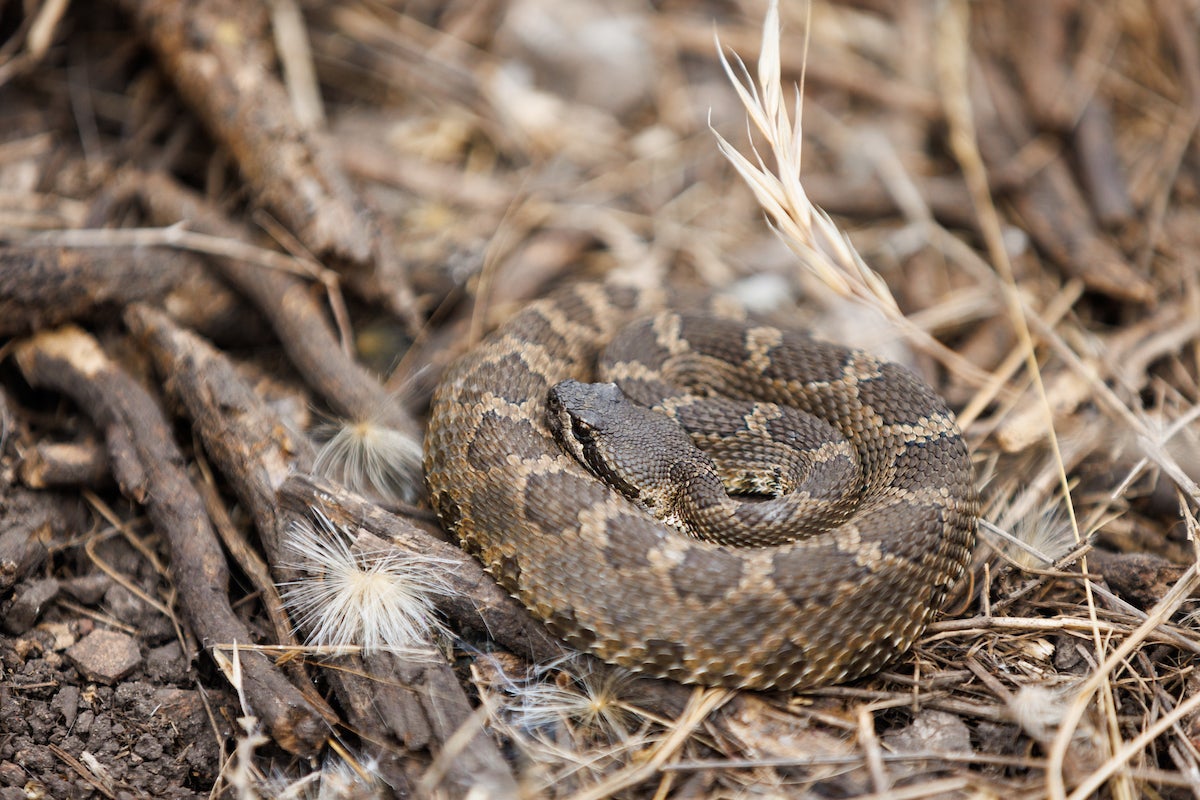
The third reason, which is completely unique to rattlesnakes, is that rattlesnake venoms are currently being studied for drug development. There's a drug that’s been on the market for decades now that is derived from rattlesnake venom.
If you know someone who's had a heart attack or gotten a stent in their heart or been treated for being at a high risk for blood clots, they might have been treated with this drug. We haven’t been able to synthetically develop anything in a lab that is nearly as good.
Really powerful venoms are great inspiration for drugs.
If you see a rattlesnake, what should you do?
If you see a rattlesnake out in the wild, like on a hiking trail, just give it space. Stay 10 feet away from it and let it move along its way because you're in its house. If rattlesnakes are in someone's yard or in their house or that sort of thing, the evidence-based best approach is to relocate that rattlesnake.
People can either relocate it themselves or call a professional. I have a consulting company, Central Coast Snake Services, that does free rattlesnake relocations in San Luis Obispo and Santa Barbara Counties and we have a hotline people can call. There’s also a website called freesnakerelocation.org where people can find a relocation service in their area.
If you choose to relocate it yourself, do not put your hands anywhere near the snake. At my company, we use these three-foot-long grabbers to pick them up and safely put them in a bucket, but you can also use a shovel to carefully scoot a snake into a trash can on its side. Be sure to relocate them about a quarter- to a half-mile away.
Under no circumstances should you kill rattlesnakes. It’s actually dangerous. A lot of people get bitten by rattlesnakes that way.
What are some myths or commonly held perceptions of rattlesnakes that you think are important to debunk?
Everything you think about rattlesnakes is a myth.
One myth is that rattlesnakes are aggressive and want to bite people. They don’t actually want to tussle with us; we’re big, scary apes. A lot of bites happen when they’re accidentally stepped on or when people mess with them — oftentimes with alcohol involved.
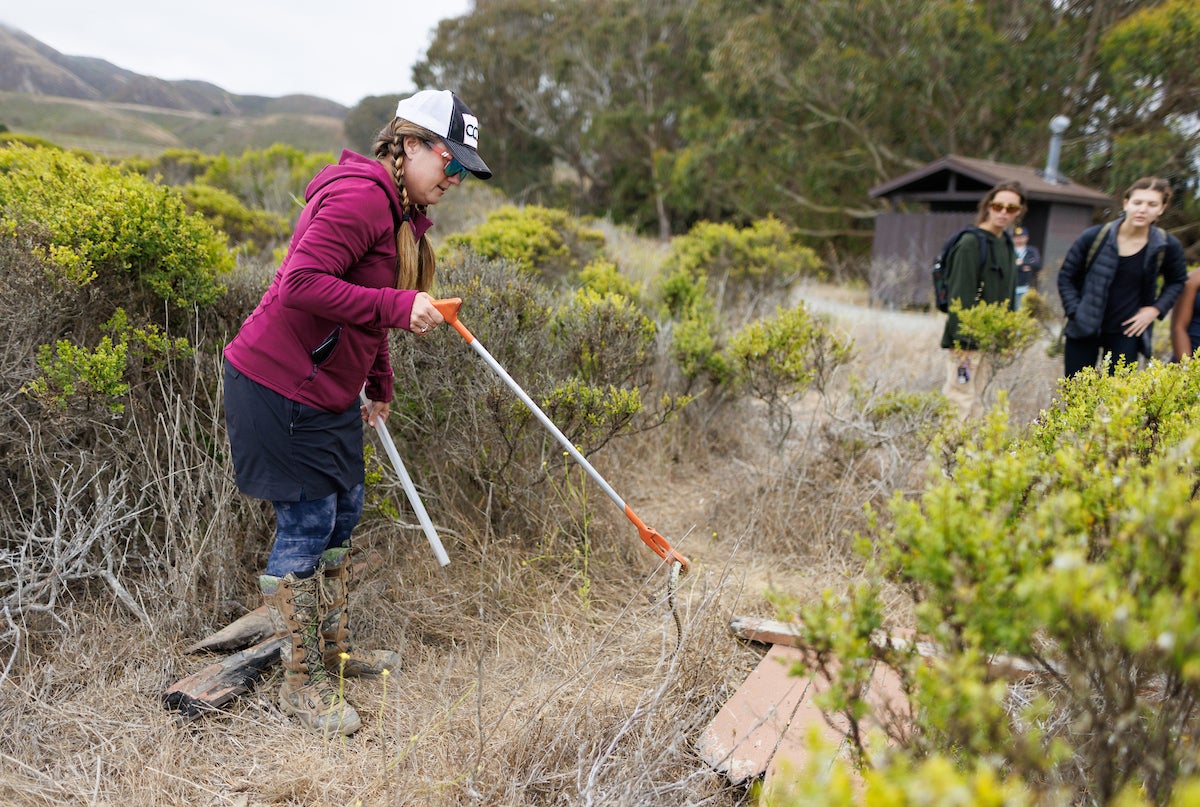
The biggest myth that people have heard is that bites from babies are worse than bites from adults. People think that babies can’t control their venom so they inject more of it and the bites are worse. None of that’s true. Bites from adults are far worse because they inject more venom. The grain of truth is that drop for drop, sometimes the venom of babies can be more toxic, but that’s irrelevant.
There’s also a rumor out there that some populations of rattlesnakes are starting to lose their rattles. The idea goes that in places where rattlesnakes get hunted pretty heavily, they give themselves away to hunters by rattling — so the ones that rattle all got caught and the ones that are less likely to rattle don’t get caught, and they pass on more genes for not rattling. That’s not true, nor is that how rattlesnake genetics work. It’s confirmation bias: someone hears that rumor, then they see a rattlesnake in the wild that doesn’t rattle and they're like, "Look, they're losing their ability to rattle."
In reality, most rattlesnakes don't rattle unless they’re very stressed out. You’ll walk by them and they’re curled up like forbidden cinnamon rolls. Camouflage is their first line of defense: they’re only going to rattle if their cover has been blown and even then, half the time, they don’t do it.
The rattle means "get away from me," and they only do it when they’re scared to death. A kid at an outreach event said the most interesting thing. They watched the snake rattling and they said, "That’s the sound of a rattlesnake screaming." It’s true. They’re not ferocious. They’re not terrifying. They just want to be left alone.
Rattlesnakes are shown on TV as these bloodthirsty rattling maniacs and that’s just not accurate. They're super gentle. They have complex social lives. They have friends and family members they like to hang out with. The mothers give live birth to young that they care for, for a couple of weeks, which is really impressive. They have a lot of values, so to speak, and the things they do are things people tend to value.
If people get bitten by a rattlesnake, or if their pet does, what should they do?
A snake bite is a very serious medical situation and people should avoid them at all costs, but it does happen.
The very first thing you should do if you are bitten by a rattlesnake is call 911 and arrange to get an ambulance to the nearest big hospital immediately. If someone decides to forego an ambulance, they at least need to have someone else drive them and call 911 ahead of time so they know someone’s coming to the hospital with a snake bite.
Dogs getting bitten by rattlesnakes is much more common because dogs see something wiggle and immediately go after it. If your dog or another pet is bitten, they need to go to the emergency vet and you should call ahead so they're prepared for you. In either a human or animal case, you should take off any rings, constrictive clothing, bandannas or collars immediately in case of swelling.
Nothing else should be done. Anything else you might have heard about — a tourniquet, or cutting and sucking the wound — none of those things work.
There is a lot of misinformation about snakebite treatment, especially in the veterinary community. Antivenom is the only treatment for a rattlesnake bite — which is true for both dogs and people — and sometimes doctors are reluctant to give it. There is an organization called National Snakebite Support which connects people to experts who will help them advocate for proper support and care.
Some people will say to give your dog Benadryl. That doesn't work because the swelling is through a different pathway. There's also a rattlesnake vaccine that people can get for their dogs and it doesn’t work. It’s useless. A better investment would be aversion training your dog to learn to stay away from rattlesnakes.
What are your best safety tips for being out and about in rattlesnake country?
Wear good shoes when you’re hiking, like hiking boots that cover your ankles. Watch where you're going and be aware of your surroundings. Rattlesnakes are not laying in wait to bite people, but accidents can happen.
Never put your hands and feet where you can't see them. When you're gardening, don't dig around in squirrel burrows without looking where your hand's going. Don't walk over logs without checking what's on either side.
In terms of keeping rattlesnakes out of your yard, the best way to do it is to eliminate any hiding places. If you have ground squirrels, you have rattlesnakes. Try to keep control of those squirrel burrows and don’t leave any debris lying around. If there are places where they can hide, along with thick brush, sources of water, rodents and bird feeders — all those things attract rattlesnakes.
And finally, don’t do anything stupid. Don’t engage with the rattlesnake. Don’t poke at it. Don’t throw stuff at it. Don't mess with it. Don't kill it. Just back away, take a photo and admire it. It’s just like seeing a shark in the ocean.
Are you currently working on any rattlesnake-related projects?
I have been developing a livestream rattlesnake camera for the last four years, working with an on-campus team that includes my lab, electrical engineering and the design and fabrication facility on campus. We’ve had a livestream camera going locally for the last three years that's helped us troubleshoot for our big livestream, which will stream from a big rattlesnake den in Colorado.
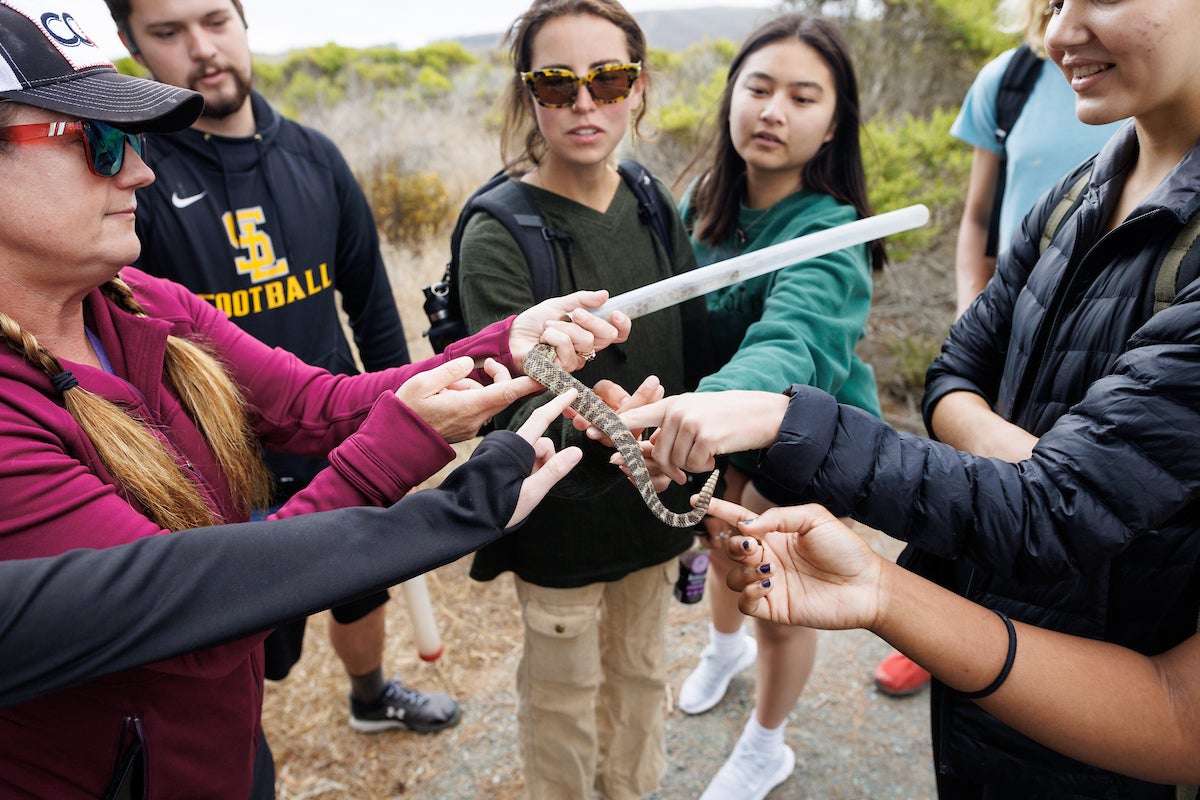
The Colorado livestream will go live at the beginning of May. People are going to be able to see, 24 hours a day, dozens to hundreds of snakes. When the females give birth, probably in August, they’ll be able to see tons of mother snakes interacting with their babies. That’s at rattlecam.org and people should definitely tune in.
One of the big goals of the livestreams is to bring rattlesnakes to people so that they can look at them anytime and see how they actually behave. But we also have some pretty big scientific goals. We have already done a detailed, hands-on study of snakes from that population and we're interested in learning more about their social behavior and their basking behavior without our interference. This is the first time we’ll be able to watch any animal, not just a rattlesnake, 24 hours a day. If you think about the falcon nest cams, or things like that, you can watch the babies anytime but the parents leave to hunt.
It’ll be a great opportunity for my students to conduct research because frankly, my students can't spend the summer on a hillside in Colorado watching these snakes in person. And if they did, it would impact the snakes’ behavior. Observing them via livestream is much better because they’re not impacting the snakes by being physically close, so we know their behavior is natural.

